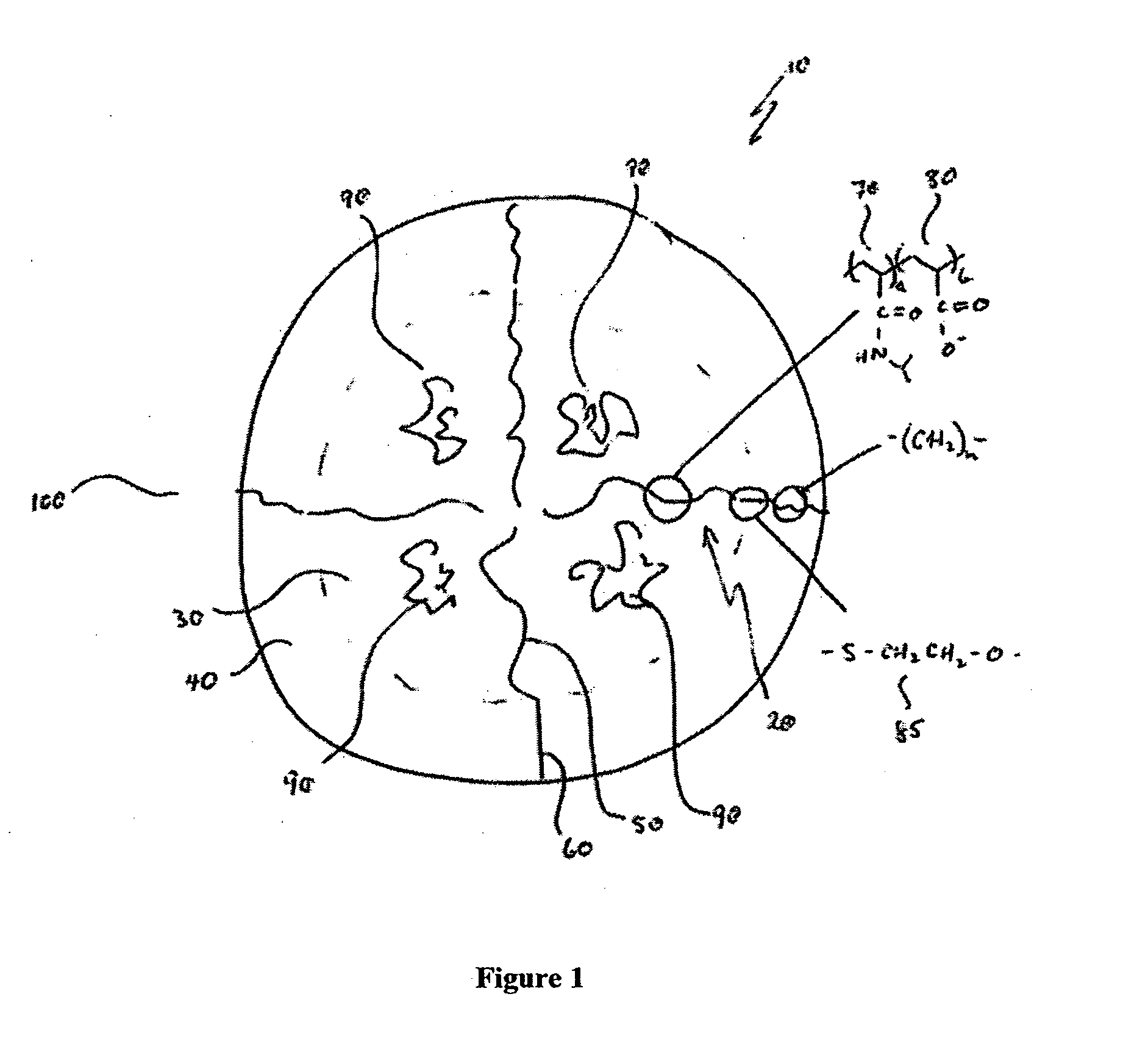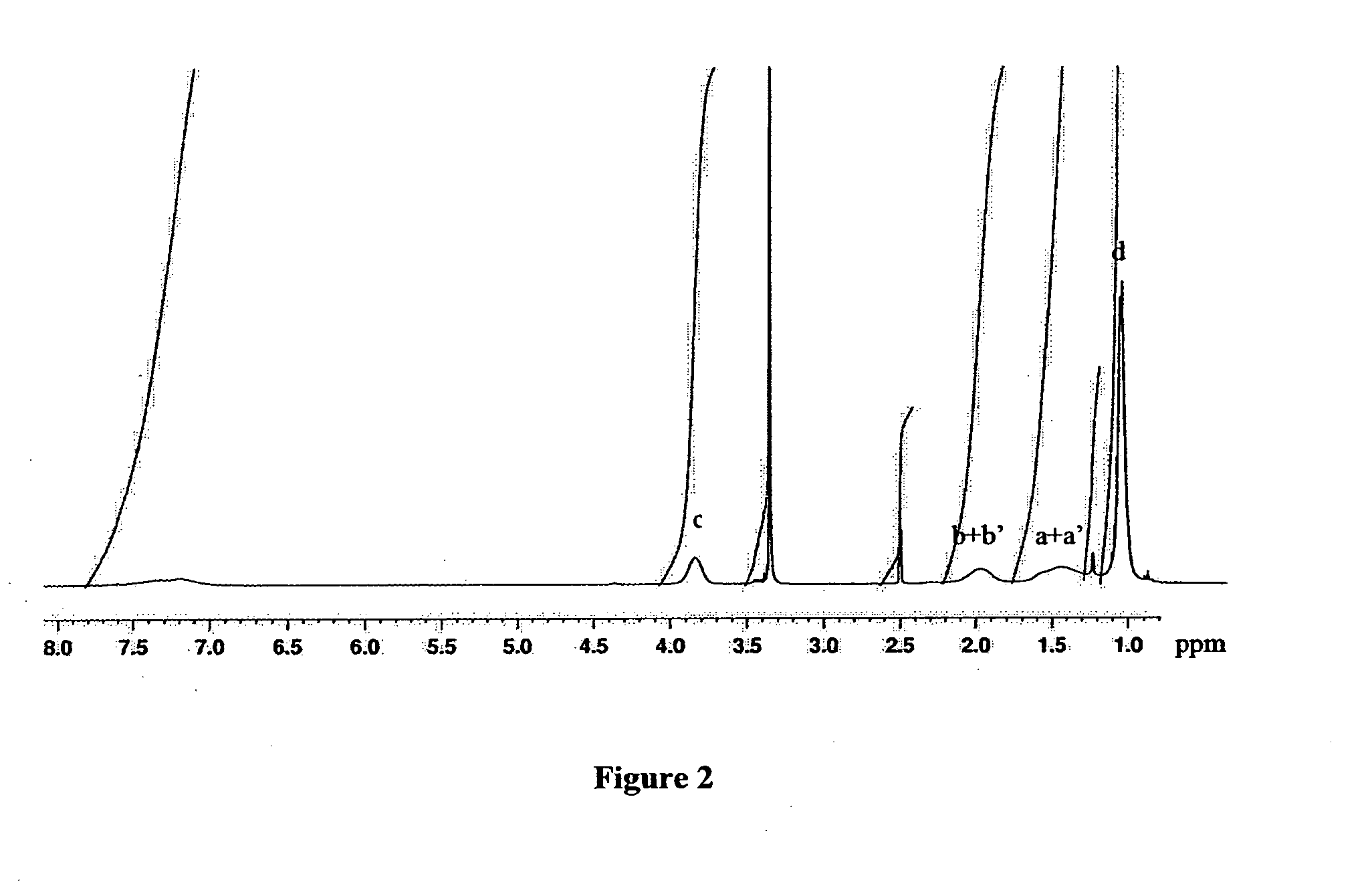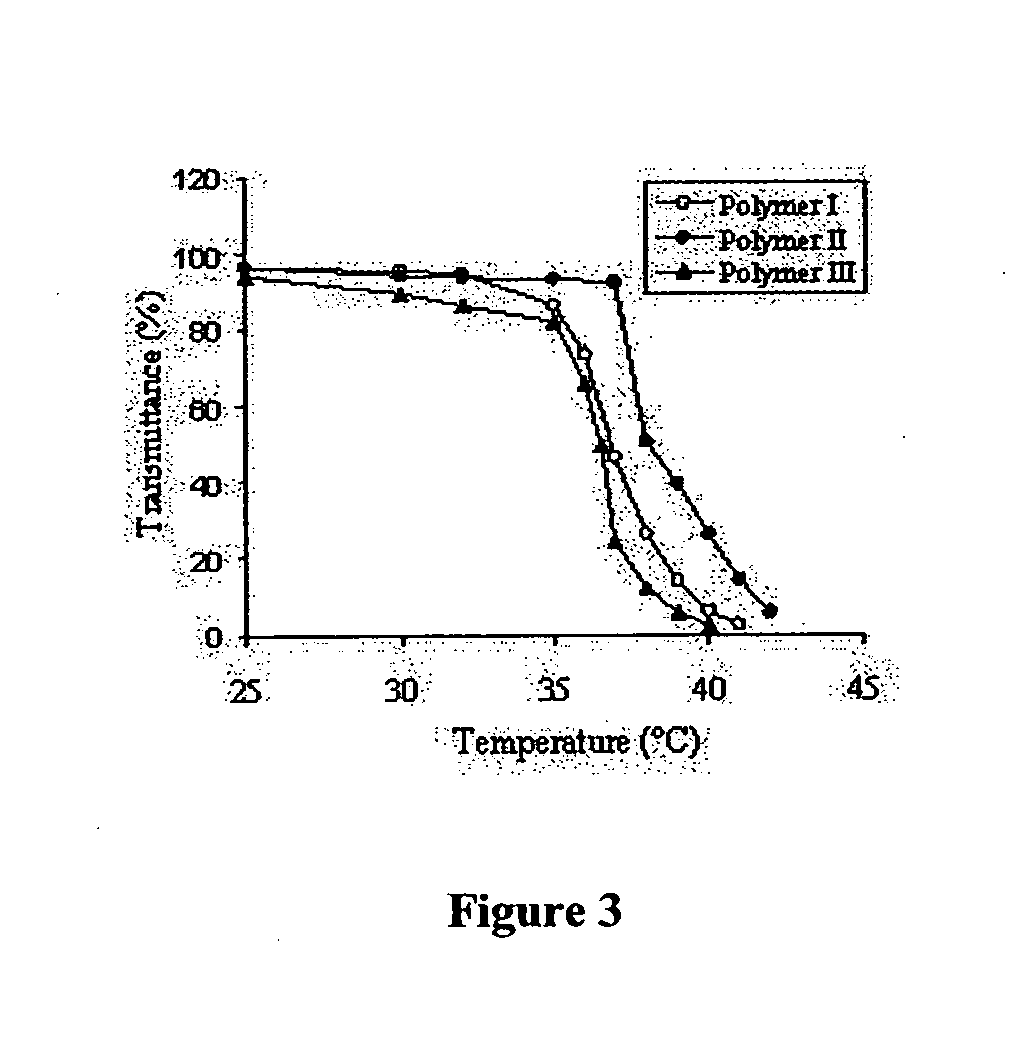Thermally responsive micelles
- Summary
- Abstract
- Description
- Claims
- Application Information
AI Technical Summary
Benefits of technology
Problems solved by technology
Method used
Image
Examples
examples
Materials
[0124]N-Isopropylacrylamide (NIPAAm, Sigma-Aldrich) was purified by re-crystallization from n-hexane. Acrylic acid (Sigma-Aldrich) was purified by vacuum distillation. Tetrahydrofuran (THF, Merck) was dried over sodium. All other chemicals were of analytical grade, and used as received.
[0125]Synthesis of alkyl end-capped P(NIPAAm-co-AA)
[0126]The copolymer P(NIPAAm-co-AA) was synthesized by radical polymerization of NIPAAm and AA using benzoyl peroxide (BPO) as an initiator and 2-hydroxyethanethiol as a chain transfer agent. N-isopropylacrylamide (11.20 g), acrylic acid (72.06 mg), 2-hydroxyethanethiol (78.13 mg), and BPO (40.37 mg) were dissolved in 100 mL of THF. The solution was degassed by bubbling nitrogen for 20 minutes. The reaction mixture was then refluxed for 8 hours under nitrogen. The product was then precipitated by addition of diethyl ether, and purified by reprecipitation twice from diethyl ether using a slow liquid-liquid diffusion method. The molecular weigh...
PUM
| Property | Measurement | Unit |
|---|---|---|
| Temperature | aaaaa | aaaaa |
| Amphiphilic | aaaaa | aaaaa |
| Responsivity | aaaaa | aaaaa |
Abstract
Description
Claims
Application Information
 Login to View More
Login to View More - R&D
- Intellectual Property
- Life Sciences
- Materials
- Tech Scout
- Unparalleled Data Quality
- Higher Quality Content
- 60% Fewer Hallucinations
Browse by: Latest US Patents, China's latest patents, Technical Efficacy Thesaurus, Application Domain, Technology Topic, Popular Technical Reports.
© 2025 PatSnap. All rights reserved.Legal|Privacy policy|Modern Slavery Act Transparency Statement|Sitemap|About US| Contact US: help@patsnap.com



